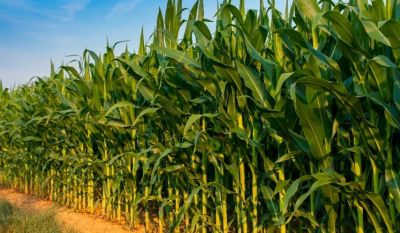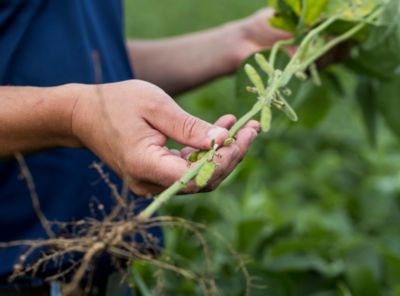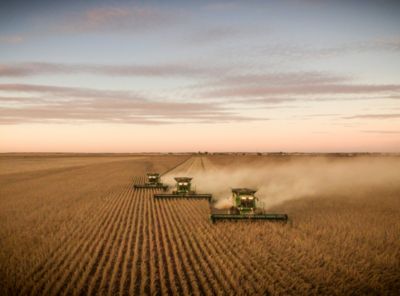All scores of integrated refuge products are based upon the major component.
All Pioneer products are hybrids unless designated with AM, AML, AMXT, PCE, Q, V, SXRA and SSE, in which case they are brands.
Ratings denoted with an asterisk (*) reflect preliminary data subject to change when additional data becomes available.
Product performance in water-limited environments is variable and depends on many factors such as the severity and timing of moisture deficiency, heat stress, soil type, management practices and environmental stress as well as disease and pest pressures. All products may exhibit reduced yield under water and heat stress. Individual results may vary.
IMPORTANT: Trait rating scores provide key information useful in selection and management of Pioneer® brand products in your area. Information and ratings are based on comparisons with other Pioneer brand products, not competitive products. Information and scores are assigned by Pioneer Research Managers. Scores are based on period-of-years testing through 2023 harvest and were the latest available at time of printing. Some scores may change after 2024 harvest. Scores represent an average of performance data across areas of adaptation, multiple growing conditions, and a wide range of both climate and soil types and may not predict future results. All products within a hybrid family receive the same score unless observations indicate a significant difference. Individual product responses are variable and subject to a variety of environmental, disease and pest pressures. Please use this information as only one component of your product positioning decision. Refer to pioneer.com/ Canada or contact a Pioneer sales professional for the latest and most complete listing of traits and scores for each Pioneer brand product and for product placement and management suggestions specific to your operation and local conditions.
1 TECHNOLOGY SEGMENT: AM - Optimum® AcreMax® Insect Protection system with YGCB, HX1, LL, RR2. Contains a single-bag integrated refuge solution for above-ground insects. AMXT (Optimum® AcreMax® XTreme) - Contains a single-bag integrated refuge solution for above- and below-ground insects. The major component contains the Agrisure® RW trait, a Bt trait, and the Herculex® XTRA genes AML - Optimum® AcreMax® Leptra® products with AVBL, YGCB, HX1, LL, RR2. Contains a single-bag integrated refuge solution for above-ground insects. LL - Contains the LibertyLink® gene for resistance to Liberty® herbicide. PCE - Powercore® Enlist® Refuge Advanced® corn products with HX1, VTP, ENL, LL, RR2. Contains a single-bag integrated refuge solution for above-ground insects. Q (Qrome®) - Contains a single-bag integrated refuge solution for above- and below-ground insects. The major component contains the Agrisure® RW trait, the Bt trait, and the Herculex® XTRA gene. RR2 - Contains the Roundup Ready® Corn 2 trait that provides crop safety for over-the-top applications of labelled glyphosate herbicides when applied according to label directions. V – Vorceed™ Enlist™ products with V, LL, RR, ENL. Contains a single-bag integrated refuge solution with multiple modes of action for above- and below-ground insects. The major component contains the Herculex® XTRA genes, the RW3 trait and the VTP trait. ALWAYS READ AND FOLLOW PESTICIDE LABEL DIRECTIONS. Roundup Ready® crops contain genes that confer tolerance to glyphosate, the active ingredient in Roundup® brand agricultural herbicides. Roundup® brand agricultural herbicides will kill crops that are not tolerant to glyphosate. Enlist Duo® and Enlist™ 1 are the only 2,4-D products authorized for use with Enlist™ crops. Consult Enlist herbicide labels for weed species controlled. Roundup Ready® is a registered trademark used under license from Monsanto Company. LIBERTY, LibertyLink and the Water Droplet are trademarks of BASF. Agrisure® is a trademark of, and used under license from, a Syngenta Group Company. Agrisure® technology incorporated into these seeds is commercialized under a license from Syngenta Crop Protection AG. PowerCore® multi-event technology developed by Corteva Agriscience and Monsanto. PowerCore® is a registered trademark of Monsanto Technology LLC. Always follow IRM, grain marketing and all other stewardship practices and pesticide label directions.
2 CRM (COMPARATIVE RELATIVE MATURITY): There is not an industry standard for maturity ratings so comparing product maturity and harvest moisture ratings between companies is usually difficult. Use the CRM rating to compare Pioneer® brand products with competitive products of a similar maturity and harvest moisture. CRM ratings, and harvest moistures, for products within a family may vary slightly, depending upon the level of insect (ECB and CRW) infestation. Conventional and straight products with the RR2 gene within a family will usually be 1-2 CRMs earlier than indicated, when insect infestations are moderate to heavy. One CRM difference is about ½ point of moisture difference at harvest.
3 PHYSIOLOGICAL CRM: Measures differences in maturity to zero milkline stage. To help decide if a new product fits your area’s growing season, compare its physiological CRM to a product that you plant or one that is successfully used in your area.
4 MID-SEASON BRITTLE STALK: Ratings determined by frequency and severity of stalk snappage at lower to middle stalk internodes from conditions usually favored by rapid or optimum growth. Relative response of products can be affected by planting date, stage of growth, rate of growth, wind severity and other variables. Scores derived from both natural observations and artificial evaluation immediately prior to tasseling. NOTE: Scores do not reflect snappage enhanced by or due to herbicide interaction. The use of growth regulator herbicides such as 2,4-D and dicamba can increase the brittle snap potential of corn products. Products with lower brittle stalk ratings will require more caution and have a higher risk associated with the use of growth regulator herbicides. Early application, proper rates and application methods, along with both product and herbicide selection can help reduce this risk. BRITTLE STALK PRECAUTION: In areas with higher potential for brittle stalk breakage, growers must balance the risk of planting products with brittle stalk ratings of less than 4 against the overall performance of more resistant products with higher ratings. All products have a period of susceptibility to brittle stalk. Products with below average ratings may have a longer period of susceptibility, or may experience more severe breakage relative to products with higher scores during period of susceptibility.
5 STRESS EMERGENCE: All products are expected to establish normal stands under average soil conditions. Stress emergence is a measure of the genetic ability or potential to emerge in the stressful environmental conditions of cold, wet soils or short periods of severe low temperatures, relative to other Pioneer brand products. Ratings of 7-9 indicate very good potential to establish normal stands under such conditions; a rating of 5-6 indicates average potential to establish normal stands under moderate stress conditions; and ratings of 1-4 indicate the product has below average potential to establish normal stands under stress and should not be used if severe cold conditions are expected immediately after planting. Stress emergence is not a rating for seedling disease susceptibility, early growth or speed of emergence.
6 DROUGHT TOLERANCE: Drought tolerance is a complex trait, determined by a platform’s ability to maintain yield in limited-moisture environments. A higher score indicates the potential for higher yields vs. other platforms of similar maturity in limited-moisture environments.
7 GRAIN DRYDOWN: Compares products of similar maturity for rate of moisture loss during grain drydown. A higher score indicates faster drydown. A lower score indicates slower drydown, or a wider opportunity for silage and high-moisture corn harvest.
8 TEST WEIGHT: Higher score indicates heavier test weight.
9 PLANT HEIGHT: 9 = Very Tall; 1 = Short.
10 EAR HEIGHT: 9 = High; 1 = Low.
DISEASE PRECAUTION: Grower should balance product yield potential, product maturity and cultural practice selection against their anticipated risk of a specific disease and need for resistance. In high disease-risk conditions, consider planting products with at least moderate resistance ratings of 4 or higher to help reduce risk. When susceptible products with disease ratings of 1 to 3 are planted in conditions of high disease pressure, the grower assumes a higher level of risk. If conditions are severe, even products rated as resistant can be adversely affected. Independent of yield reduction, diseases can predispose plants to secondary diseases such as stalk rots. This requires individual field and product monitoring for stalk stability and timely harvest when warranted.
DISEASE & PEST RATINGS:
8-9 = Highly Resistant; 6-7 = Resistant; 4-5 = Moderately Resistant; 1-3 = Susceptible; Blank = Insufficient Data.
11 GRAY LEAF SPOT PRECAUTION: Avoid planting products with a lower gray leaf spot (GLS) rating in continuous corn fields that have a history of GLS infection, unless tillage operations that bury significant amounts of corn residue and inoculum are practiced.
12 NORTHERN LEAF BLIGHT CAUTION: In conditions where northern leaf blight (NLB) risk is high, growers should consider planting only products with at least moderate NLB resistance ratings of 4 or higher.
13 GIBBERELLA EAR ROT CAUTION: Ratings based upon visual symptoms at harvest. If Gibberella ear rot has caused significant damage in the past, growers should consider planting only products with at least moderate Gibberella ear rot ratings of 5 or higher.
14 TAR SPOT CAUTION: Tar spot scores reflect the relative sensitivity of the hybrids evaluated. Products with higher scores pose lower risk of severe disease development. In areas with tar spot pressure, consider using products with higher tar spot ratings. In addition, consider the use of fungicides labelled for use on tar spot when the disease is present. As more evidence is collected, suggested score minimums for high-risk conditions will be developed.
15 SILAGE CRM (Silage Comparative Relative Maturity): With no industry standard for silage maturity, comparing maturity and harvest moisture across various companies’ corn-for-silage hybrids can be difficult. Pioneer silage CRM ratings provide a relative comparison among Pioneer® brand products of rates at which products reach harvestable whole plant moistures. It is on the same scale as the CRM rating provided for grain corn products and does not represent actual days from planting or emergence to harvest moisture or half milkline.
16 SILAGE YIELD: Based on whole-plant yield per acre (adjusted to 35% dry matter) from multi-year comparison with other products within a maturity range not exceeding 5 silage CRM units.
17 STARCH AND SUGAR, %: Percent starch and soluble sugars (DM basis) in the whole-plant sample predicted by NIRS.
18 FIBRE DIGESTIBILITY: Based on 30-hour rumen-fluid based estimate of the percent of ruminally degradable neutral detergent fibre (NDF) as a percent of total NDF in whole-plant samples, predicted by NIRS. Brown MidRib Corn hybrids are designated with “B” since NDFD30 averages 6-8 percentage points higher than non-BMR silage hybrids. To optimize fibre digestibility, growers should consider use of BMR Corn hybrids.
19 SILAGE CRUDE PROTEIN: Based on the amount of crude protein in the whole plant, predicted by NIRS.
20 MILK PER ACRE: 9 = Outstanding; 1 = Poor, based on University of Wisconsin MILK2006 utilizing silage yield, nutrient content and digestibility.
21 MILK PER TON: 9 = Outstanding; 1 = Poor, based on University of Wisconsin MILK2006 utilizing silage nutrient content and digestibility.
HERBICIDE PRODUCT MANAGEMENT GUIDE: Under certain environmental conditions any corn product can be injured by any herbicide. This guide can assist in selecting and managing herbicide programs. It is based on replicated research trials and field observations. See your Pioneer sales representative or herbicide representative regarding herbicide families that require careful management. ALWAYS READ AND FOLLOW ALL LABEL INSTRUCTIONS AND PRECAUTIONS. PIONEER MAKES NO WARRANTY REGARDING THE HERBICIDE CROP RESPONSE INFORMATION IN THIS GUIDE.
ADEQUATE TOLERANCE. With this particular product, available research and/or field observations suggest this herbicide is unlikely to result in material crop injury under normal circumstances.
REQUIRES CAREFUL MANAGEMENT. With this particular product, available research and or field observations suggest this herbicide may exhibit crop injury in challenging environments such as, heavy rainfall during seed germination or seedling emergence, sandy soils, soils low in organic matter, high pH soils, or during periods of excessively cold, hot, dry or wet weather. *University research indicates products within a herbicide class may vary in their degree of crop selectivity. The potential for herbicide interaction may also be impacted by the labelled herbicide rate used and the method or timing of application as well as the addition of additives
CROP RESPONSE WARNING: With this product in field observations and/or research, crop injury has occurred with this herbicide.
Insufficient Data: Additional testing is needed to evaluate this variety
23 AMIDE (CHLOROACETAMIDE AND OTHERS): Injury from chloroacetamide herbicides is more prevalent on sandy soils with low organic matter. Additional conditions that may increase the potential for injury include deep planting, cool wet conditions, and/or soil crusting. Management comments for reducing injury potential include:
1. Monitor planting depth.
2. Avoid sandy soils with low organic matter.
3. Use a chloroacetamide herbicide with a safener.
4. Use rotary hoe if crusting occurs, to aid in emergence.
5. Avoid ultra early planting dates.
24 PHENOXY AND BENZOIC ACID (SYNTHETIC AUXINS): Potential for crop injury from growth regulator herbicides increases when product is under stress, herbicide is applied at a late stage of growth, or high winds occur after application. Management comments for reducing injury potential include:
1. Apply herbicide early within label recommendations (up to 5-6” or V3 for dicamba).
2. Avoid spraying when daytime temperatures are high and corn plants are growing rapidly.
3. Follow labeled rates for specific stages of growth.
4. Avoid spraying when environmental conditions such as drought, cold soils, or wind damage cause abnormal stress.
5. Please read labels carefully. Many herbicides include growth regulator herbicides as part of their pre-mix. Many tank mixes require use of NIS or other additives that may increase injury potential.
6. Enlist™ containing corn hybrids, Vorceed™ Enlist™ Corn, Powercore® Enlist™, or SmartStax Enlist® corn hybrids have built-in tolerance to 2,4-D Choline. They do not have added tolerance to benzoic acid herbicides. Thus, ratings for these hybrids are associated only with benzoic herbicides (i.e., P00177V™ )
25 ISOXAZOLE (4-HPPD INHIBITORS): Crop injury from a pigment inhibitor is more probable on sandy soils with low organic matter. Cool, wet growing conditions may also increase potential for damage. Management comments to reduce the potential for injury include:
1. Follow labeled rates for specific soil types.
2. Avoid sandy soils with low organic matter.
3. Avoid ultra early planting dates to prevent extended slow emergence under cold conditions.
4. Plant seed at least 1.5 inches deep with good seed furrow closure.
5. Aid emergence with a rotary hoe if crusting occurs.
26 SULFONYLUREAS (SU - ALS INHIBITORS): Injury from sulfonylureas is more likely when corn is sprayed after the plant is 10-12 inches tall and/ or is under stress extremes such as hot humid or cool dry conditions. Management comments to reduce the potential for injury include:
1. Apply herbicide early within label recommendations (before product is 10-12 inches tall).
2. Avoid spraying when corn is under stress extremes such as hot humid or cool dry conditions.
3. Some sulfonylurea products are restricted on products with maturity shorter than 88 CRM. Review the label carefully before applying any sulfonylurea product to products less than 88 CRM.
4. Use a sulfonylurea herbicide with a safener.
References: (1) 2022 Herbicide Guide for Iowa Corn and Soybean Production, Extension Publication WC-94, B. Hartzler & M. Owen; (2) Weed Control Guide for Ohio, Indiana, and Illinois 2023 Edition, Bulletin 789, The Ohio State University Extension, M. M. Loux, A. Essman, D. Doohan, and A. Dobbels, The Purdue Extension; W.G. Johnson, B. Young, and M. Zimmer; University of Illinois Crop Sciences: A. Hager; University of Missouri: Kevin Bradley. (3) 2023 Chemical Weed Control for Field Crops, Pastures, Rangeland, and Noncropland, Bulletin SRP 1148, Kansas State University, Agricultural Experiment Station & Cooperative Extension Service, S.R. Lancaster, W. H. Fick, R.S. Currie, and V. Kumar.








